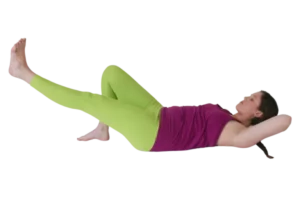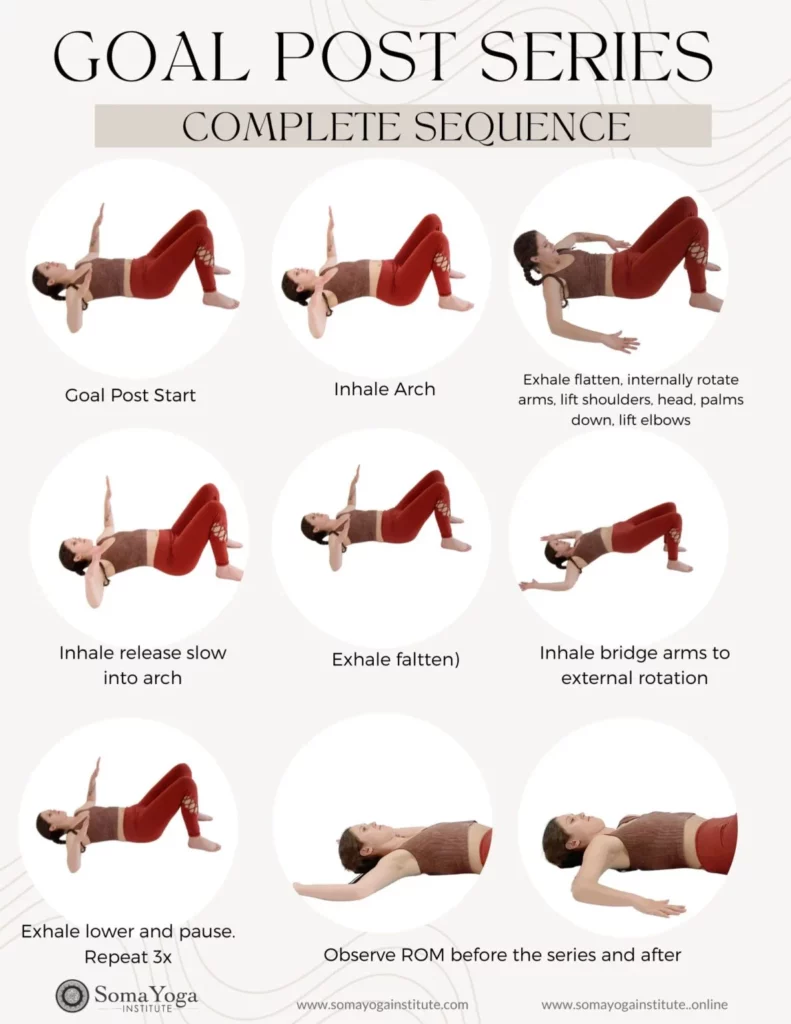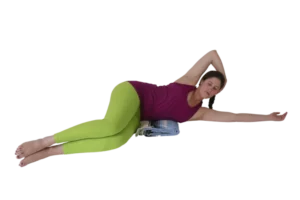Updated 10/5/24
The therapeutic benefits of Somatics are worth exploring especially if you suffer from chronic pain or a dysregulated nervous system. Somatics is a gentle movement practice that involves utilizing the connection between the mind and body to become more aware of one’s internal state and to acknowledge the bodily signals that indicate areas of pain, discomfort, or imbalance.
Somatics focuses on the interconnectedness of the mind and body. It places focus on the role of the nervous system in movement, perception, and overall well-being. It is based on the idea that the body holds onto physical and emotional tension and that these tensions can be released through various and specific techniques, such as gentle movement and breathwork. Generally, some of the therapeutic benefits of somatics include reduced pain and tension, a decrease in the stress response, improved body awareness, an increase in flexibility, a reduction in the trauma response, and enhanced emotional regulation.

Sensorimotor Amnesia and the Therapeutic Benefits of Somatics
One of the key principles of somatics is the concept of “sensory motor amnesia.” This refers to the disconnection between the brain and the body that can occur as a result of stress, trauma, or habitual patterns of movement. This disconnection can manifest as physical tension, pain, or a lack of awareness of the body’s movements and sensations. Somatic practices aim to restore this connection. It does so by helping individuals become more aware of and attuned to their physical and emotional experiences.
One of the therapeutic benefits of somatic movement practice is helping individuals to release chronic tension in specific muscle groups and improve the flexibility of the fascial matrix in the body. Many somatic techniques involve gentle, slow movements that help to release tension in the muscles and connective tissue.
The development of Somatics was greatly influenced by Moshe Feldenkrais, an Israeli physicist, and engineer who also had a deep interest in human movement and learning. He developed the Feldenkrais Method, which is a form of somatic movement therapy that utilizes gentle movements and increased body awareness to improve physical function, reduce pain, and enhance well-being.
Pandiculation and the Therapeutic Benefits of Somatics
Thomas Hannah, another pioneer in the field, developed and documented the therapeutic benefits of somatics movements. He coined the term pandiculation to describe the process of consciously stretching and contracting the muscles in order to improve flexibility, relaxation, and body awareness. Pandiculation is an important aspect of somatic practice. It is used in combination with other somatic techniques, such as awareness of breath and sensory-motor learning, to help individuals develop a deeper understanding of their own bodies and how they move.
Pandiculation can be done in a variety of different positions and can be adapted to fit the needs and abilities of the individual. Some people may find it helpful to pandiculate to warm up before more strenuous yoga practice, while others may use it as a relaxation technique to help them unwind after a long day or before a yoga nidra (deep yogic relaxation). All of these options are a great way to enjoy the therapeutic benefits of somatics.

Down Regulates the Nervous System
Somatics has the ability to downregulate the nervous system, leading to reduced stress and increased relaxation. By focusing on slow, gentle movements and bodily sensations, practitioners of somatics can activate the relaxation response of the parasympathetic nervous system. This process can decrease the activity of the sympathetic nervous system, which triggers the body’s stress response. Regular somatics practice can promote overall well-being by developing greater body awareness and relaxation, which can reduce stress levels.
Pain Reduction
Another therapeutic benefit of somatics is its ability to reduce pain and tension. Chronic pain and tension can be caused by a variety of factors, including stress, poor posture, and poor movement patterns. So, somatic practices can help individuals to identify and address the root causes of these issues, leading to less in pain and tension.
Awareness
But the therapeutic benefits of somatics don’t stop there. In addition to improving flexibility and lowering pain and tension, somatic practices can also help individuals become more aware of their bodies. This improved body awareness can have a number of therapeutic benefits, including better self-awareness and self-regulation.
In conclusion, somatics is a holistic approach to physical and mental health that focuses on the interconnectedness of the mind, body, and spirit. Markedly, the therapeutic benefits of somatics are numerous, including reduced pain and tension, better body awareness, lower stress response, reduced trauma response, and enhanced emotional control.
If you are interested in incorporating somatic practices into your routine or weaving somatics into the beginning and end of your yoga classes, consider joining our online course.
Somatic Movement Training for Yoga Teachers
with C-IAYT Yoga Therapist Liz Heffernan
Learn to teach and enjoy the therapeutic benefits of somatics. Help your students relieve pain patterns in their bodies, calm deregulated nervous systems, build neuroplasticity, and increase their interoceptive awareness.
15 hours Yoga Alliance CE.
OR
Check out our LIVE YTT Programs!

References:
Feldenkrais, M. (1972). Awareness through movement: Health exercises for personal growth. New York, NY: Harper & Row.
Hannah, T. (2010). The Body of Life: Creating New Pathways for Sensory Awareness and Fluid Movement. Boston, MA: Shambhala.
Levine, P. A. (1997). Waking the tiger: Healing trauma. Berkeley, CA: North Atlantic Books.
Kurtz, R. (1990). Body-centered psychotherapy: The Hakomi method. Mendocino, CA: LifeRhythm.
Trager, M. (1989). Trager mentastics: Movement as a way to self-healing. Berkeley, CA: North Atlantic Books.
Rolf, I. (1977). Rolfing: Reestablishing the natural alignment and structural integration of the human body for vitality and well-being. New York, NY: Dutton.